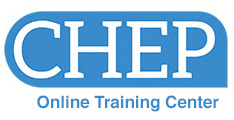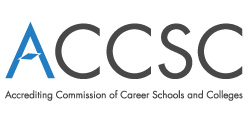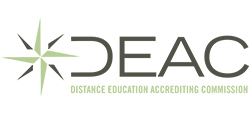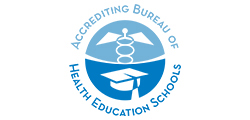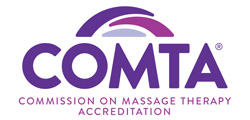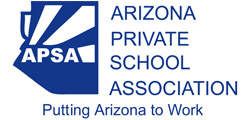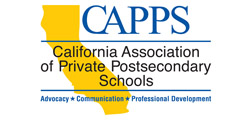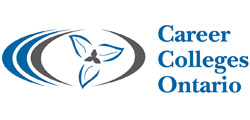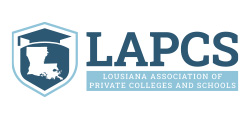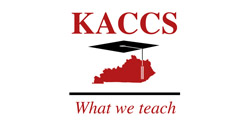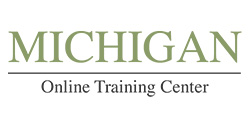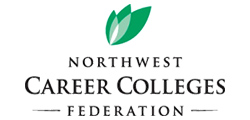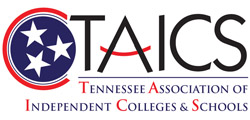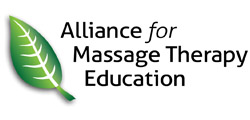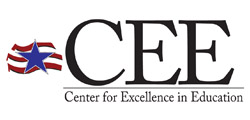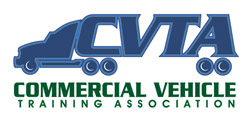Badge Evidence | Completed Courses (4 Hours Each)
ACCSC101Fulfilling the Standards of Accreditation: Administration
This course "pulls back the curtain" for schools to help them better understand the principles and purposes of the ACCSC Standards of Accreditation. ACCSC101, along with the accompanying course ACCSC102, lays out the standards in line with the way schools are typically structured to better help you comprehend the important relationship between each standard and each aspect of running a compliant, accredited school. This course addresses the standards on the administrative side of your school, such as standards that relate to operations, admissions, and financial aid.
ACCSC102Fulfilling the Standards of Accreditation: Academics
This course focuses on the ACCSC Standards of Accreditation which directly tie to the academic areas and program requirements for an accredited school. The course includes information on program development and design, educational policies and procedures, faculty, student services, and educational delivery methods.
ACCSC110Preparing for ACCSC's Essential Workforce Skills Programmatic Certification
Since the inception of career education, it seems employers have consistently claimed that students lack so-called soft skills. Although there's no universal agreement on what to call them, the term represents a set of skills (including things such as teamwork and communication skills) regarded as essential for long-term success in the workforce. ACCSC refers to these types of skills as essential workforce skills.
This course will help institutions adopt a framework for high-quality career education programs, holistically integrate essential workforce skills into their programs, enhance students' development and demonstration of them, and prepare to achieve Essential Workforce Skills (EWS) Programmatic Certification.
CS101Setting Up an Effective Career Services Department
This course offers strategies to provide employment and job search skills training that enables students to seek jobs in the field for which they are trained. You'll learn how to offer comprehensive career services regardless of whether your career services department is staffed full- or part-time. The course provides strategies for an institution to set up a Career Services Department, enhance and run it, and measure results. It describes how a successful career services department can ensure that your students have the skills and self-confidence to succeed in the workplace. You'll learn techniques to increase placement rates and reach out to the community to meet and maintain relationships with hiring decision-makers.
CS102Empowering Students to Find and Secure the Right Job
In this course, you will be given tools to help your students find the job that's right for them, present themselves impressively on paper, and interview with ease. This course is designed so you can successfully support your students in four phases of their job search: doing a targeted job search, writing a powerful resume and cover letter, presenting professionally, and developing effective interview skills.
CS104Developing a Social Media Strategy for Career Services
Social media is critical tool for career services professionals to interact with and reach their constituent groups yet many career professionals aren't aware of how to develop a purposeful social media strategy. Without a social media strategy, career services departments risk losing relevance with their audience, and they also lose the opportunity of harnessing social media to achieve department goals. This course describes the phases of planning and implementing a social media strategy for your career services department. Each module is based on the fundamental steps of preparing a comprehensive and measurable plan to achieve the goals of the career services department.
CS107Advising Students on Using Digital Career-Marketing Strategies
In today's world where jobs are posted online, matching algorithms screen digital résumés, and recruiters source candidates online, students must market themselves online. Writing a résumé and cover letter alone is no longer an adequate skill set for career seekers to successfully find and secure employment as well as manage, advance, and transition their career throughout life. Students must know how to digitally market themselves, and 21st century career advisors must know how to advise them. This course will help you advise students on developing digital career-marketing strategies for career success.
CS115Developing and Maintaining Effective Employer Partnerships
Establishing, developing, and maintaining employer relationships is a large aspect of a career-services practitioner’s responsibility. This involved process requires insight into your institution, your department, and your industry, as well as an understanding of key strategies that can assist in the building and nurturing of employer relationships. From acquiring industry knowledge to marketing your services and identifying opportunities for long-term employer engagement, this course can assist you in providing a roadmap intended to move you from a potential cold-call relationship to understanding an employer’s perspective on return on investment and gaining effective and long-lasting employer partnerships.
CS122Teaching LinkedIn Strategies for Career Success
In today's digital labor market, a strong online presence is a necessity. As the world's largest online professional network, LinkedIn is a critical platform for anyone serious about building their professional online presence and advancing their career. However, many learners may not know how to make the most of this powerful tool, and as a career professional, it's your job to help them succeed. This course will equip you with the knowledge and skills you need to teach your learners how to create a standout LinkedIn profile, expand their professional network, and tap into valuable resources that can help them stay ahead in their field.
*The course contains multiple done-for-you tools and resources for download and use with learners.
ED101Effective Teaching Strategies
This introductory course covers the essential roles of a teacher and the competencies required to be a successful instructor in an educational institution. Proven techniques and strategies for planning and preparation are presented and discussed. In addition, the course offers effective methods for conducting the first class meeting and delivering course content. This course provides a solid foundation for new instructors and serves as an excellent refresher for more experienced instructors.
ED102Student Retention Methods
The instructor is the real key to student retention at any educational institution. Instructors must keep focused on student motivation and retention each and every day of class. Developing strategies for retaining students throughout the entire training sequence is both complex and rewarding. All instructors should have the goal of seeing all of their students successfully complete their class. This course helps you reach that goal by helping you to understand your students and use proven motivation and retention techniques to keep them enrolled and engaged in the learning process.
ED103Student Learning and Assessment
Educators work with students who want to learn specific skills that will lead to fulfilling careers. As educational instructors it is our job to help each student to achieve this goal. Just as you may have a particular style of teaching that you prefer, your students have preferred ways of learning. This course will help you to identify the different learning styles of your students so that you can adjust your instruction to better accommodate them. Good teachers also regularly monitor the effectiveness of their instruction by assessing their students’ learning. This course will examine several aspects of assessment including how to create good tests, how to ask effective questions and how to get your students to actively participate in their learning by asking questions themselves.
ED104Class Management Strategies
This course provides methods and techniques for managing students and class activities. We start by reviewing the steps instructors need to follow as they introduce a class to new students. We then discuss strategies to effectively deal with unfocused and challenging students. The course ends by describing common mistakes made by instructors and ways to avoid them.
ED106Enhancing Student Learning
This course provides methodologies and examples to help instructors increase content retention and application by students in need of support. The course starts by covering the skills needed by instructors to be clear communicators. We then discuss ways instructors can become effective in monitoring students and using student groups as learning tools. The course concludes by covering techniques and strategies to instruct diverse learners, including learners with disabilities.
ED110Time and Stress Management for Instructors
Outstanding teachers serve their students by guiding them through their coursework and motivating them to complete program requirements. Instructors at educational institutions are often faced with high stress resulting from heavy teaching loads and limited time. When teachers cannot manage their own time and stress, they cannot fully serve the needs of their students. This course will show instructors how to manage time and stress in their lives and teach some of these skills to their students.
ED111Active Learning Methods
This course provides an introduction to the concept and philosophy of active learning, and describes a variety of methods to help instructors "activ-ate" their class. The course includes active learning examples that utilize both critical and analytical thinking skills. We also identify the risks that may discourage instructors from using active learning strategies and offer suggestions for managing them. A three-step method is suggested for developing an active lesson, and a comprehensive model is offered as a guide for creative active learning strategies.
ED112Influencing Student Motivation
This course is intended to offer a practical explanation of how an instructor’s behaviors and choices can influence the motivation of students. It is not intended to be a theoretical or academic treatise about motivation. Module 1 offers useful tips that may help instructors to motivate students. Students’ security and autonomy are described as they influence motivation during instruction, questioning, activities, and evaluations. This is followed by a discussion of how motivation can be improved by enhancing students' sense of autonomy when making assignments, selecting instructional methods, implementing classroom procedures, and developing evaluations. In Module 2, intrinsic and extrinsic motivators are defined and compared. Finally, a variety of "miscellaneous motivators" are offered for instructors to consider.
ED115Soft Skills for Instructors
The purpose of this course is to provide instructors with a very basic introduction to the concepts of soft skills and emotional intelligence (EQ). It is designed especially for new instructors in career schools who have little or no training in educational techniques and who are unfamiliar with the basics of emotional intelligence. The course provides a comparison of hard and soft skills, including people skills and workplace behaviors. Ten important soft skills are discussed in detail and the relationship between EQ and soft skills is explained. The course concludes with tips and suggestions to help instructors enhance their soft skills and EQ.
ED117Teaching Gen Y Students
Generation Y students are often associated with their use of technology. While technology is an essential part of their lives, there is much more to know about Gen Y learners. This course gives a profile of Generation Y learners and how they relate to other generational learners in the classroom. Strategies are given for engaging Gen Y students in the learning process while building on their abilities to use social networks, portable media and personal interaction. Instructors of Gen Y students are given methods that can be used to help them develop the critical thinking and interpersonal skills needed for many of todays careers.
ED120Nonverbal Communication in the Classroom
Studies reveal that as much as 85% of classroom communication is nonverbal. This course consists of eight entertaining modules that include audio tracks, animation and interactivity. Topics include the importance of nonverbal communication in the classroom, as well as our everyday lives. The modules describe the use of body language, effective vocal cues, proper appearance and the effective use of space (proxemics) and time (chronemics). A variety of support materials accompany the modules, including an assessment tool that instructors can use to evaluate their nonverbal skills.
ED125Effective and Efficient Instructional Strategies
Planning Effective and Efficient Instruction provides new and experienced instructors with practical ways to design and deliver learning experiences that establish an environment that facilitates learning. The course summarizes important academic concepts while providing specific strategies for planning lessons, reaching learners, asking questions and assessing student mastery of the course and program objectives.
ED130Teaching Students with Post Traumatic Stress Disorder
Students (both veterans and non-veterans) with Post Traumatic Stress Disorder (PTSD) are enrolling in career education in increasingly larger numbers. Instructors need to have a basic understanding of what PTSD is and how it impacts the lives of students. This course covers what PTSD is and the characteristics that students with PTSD may display. In addition, Traumatic Brain Injury (TBI) is discussed as many students enrolling in career education have both PTSD and TBI. Instructional strategies to support the learning of students with PTSD and/or TBI will be discussed and examples given. Participants will also be given sources where they can gain additional insight into how to support the learning of students with PTSD and/or TBI.
ED209Students as Customers
As opportunities for education become more prevalent, educational institutions must compete to increase, or even maintain, their student enrollment levels. More and more institutions are adopting the strategy of treating students like customers in order to be successful. This course will review the characteristics of adult learners and determine the reasons adult students leave the institution. It will discuss the concept of interacting with students as though they are customers and how the students-as-customers concept relates to the instructor and the classroom. This course will also describe the methods and techniques of effective communication. Included are guidelines and techniques for advising and mentoring students.
EL102Online Teaching Techniques
Your degree of success as an online instructor relies heavily on several factors, among which are your level of preparedness before the date on which the course is launched; your ability to make a smooth transition into the roles and responsibilities associated with teaching in an online environment; and the effectiveness and efficiency with which you manage learners, instructional transactions embedded in the course as well as the learning environment. In this course, you will learn how to project your authority and presence into the e-learning environment, build a relationship with each learner, promote and nurture learner participation, provide informative and constructive feedback in a timely manner, minimize attrition, manage communications, manage unacceptable behavior and resolve disagreements.
EL103Teaching Online: A Student-Centered Approach
This course will provide you with the knowledge and skills to author, teach, assess, and revise successful online courses. You will learn to develop a course framework with consistent modules. Constructing an online community and a dynamic syllabus are important in helping you communicate with students. You will also learn how to develop an assessment plan including self- and peer-assessment as you progress through the course. No online course is complete without a comprehensive revision cycle. This course will walk you through the process of "closing the loop" to create a complete revision and improvement plan for your online course. We will provide you with ideas for student-centered learning, with activities and intellectual interactions using a variety of technology tools.
EL104Teaching and Organizing a Virtual Learning Environment
This course will provide you with basic information to teach in a virtual learning environment and understand the importance of organizing course content. You will learn about the important role technology tools play in teaching and organizing an online course. You will also learn the difference between synchronous and asynchronous learning. As the components of each are discussed, you will further identify appropriate methods, develop guidelines, organize content, and establish a pattern of teaching for each method.
EL105Online Language: Communicating with Students
This course will provide you with information to help you effectively communicate with students and encourage communication among students in an online environment. You will learn the importance of facilitating instructor-to-student (I2S), student-to-instructor (S2I), and student-to-student (S2S) communication. Technology tools play a vital role in the communication process and several are discussed in this course. In addition, discussion is also provided to help you further understand how to manage and measure communication in an online course and help students communicate effectively.
EL108Preparing Students to Become Good Online Learners
This course will provide you with strategies and techniques to help prepare students for the online environment. To do so, you must also assess your strengths and weaknesses as an online instructor. As you help students assess their readiness for online learning, you are also preparing them for the expectations and realities of the online environment. By identifying students' strengths and weaknesses, you can provide guidance to help them achieve the learning outcomes. This course not only notes the necessary technical skills, it also discusses non-technical skills as well as techniques for successful learning and helping students develop their online persona.
EL112Workload Management Strategies for Teaching Online
This course will provide you with strategies and techniques to help you reduce your workload in the online environment. The course begins with an overview of good principles for education and questions to consider prior to developing Workload Management Strategies (WLMS). This course also provides WLMS for teaching online, communicating and collaborating, and revising your online course.
EL113Active Learning in an Online Environment
This course will provide you with a basic overview of the background and history of the popular instructional method called active learning. This method differs from traditional educational methods such as the lecture model. Active learning has a definite place in education especially in the online learning environments. It is used to support teaching outcomes like critical thinking skills, interpersonal skills and knowledge acquisition that all instructors wish for their students. However, active learning it calls for a change of attitude on the part of students and the instructor in order to be successful. But the advantages far outweigh the disadvantages as it can make students enthusiastic about learning. Learn about this brave new world of teaching and learning for the next generation.
EL141Engaging Online Learners
This course will explore the online learning landscape and how to ensure learner engagement remains high, even when working virtually. The course discusses various aspects of online education, as well as discussing techniques for both social and motivational forms of engagement and how to apply them appropriately in courses.
The goal of this course is to help develop a better understanding of the topic and produce tangible resources to help implement plans, strategies, and ideas at your school. In addition to lecture videos, links to possible resources, and assessments, you will be able to utilize the Journal and Learning Activities. Take advantage of a method that best works for you.
ML115Project Management
This course provides the nuts and bolts of project management, including project planning, budgeting, team-building, execution, and risk analysis. The course covers useful tools and techniques such as GANTT and PERT charts, Work Breakdown Structure, and variance analysis.
RT101Improving Retention through Timely Intervention
How many times have we said “if we’d only known” as a student walks out the door? No one starts classes planning to fail, but unfortunately problems do arise that present barriers to success. Students are good at identifying these problems blocking their path to success, but they frequently don’t have adequate problem solving and communication skills needed to overcome these problems. This course looks at the effect of stress on attrition, the use of tools to identify and help students at risk, and how to develop an institutional culture that shares responsibility for student success across the entire organization.
RT102Orientation and First Week Activities to Increase Retention
Building a program to ensure a smooth "hand off" from Admissions to Faculty is a critical component of student retention. Applicants often develop a strong bond with their admissions representative that ends (from the institution's standpoint) once they begin classes. This online course provides practical ideas on designing an orientation program, first-week-of-class and other retention activities that connect the student with faculty, the college and each other that will help you retain and graduate more students.





